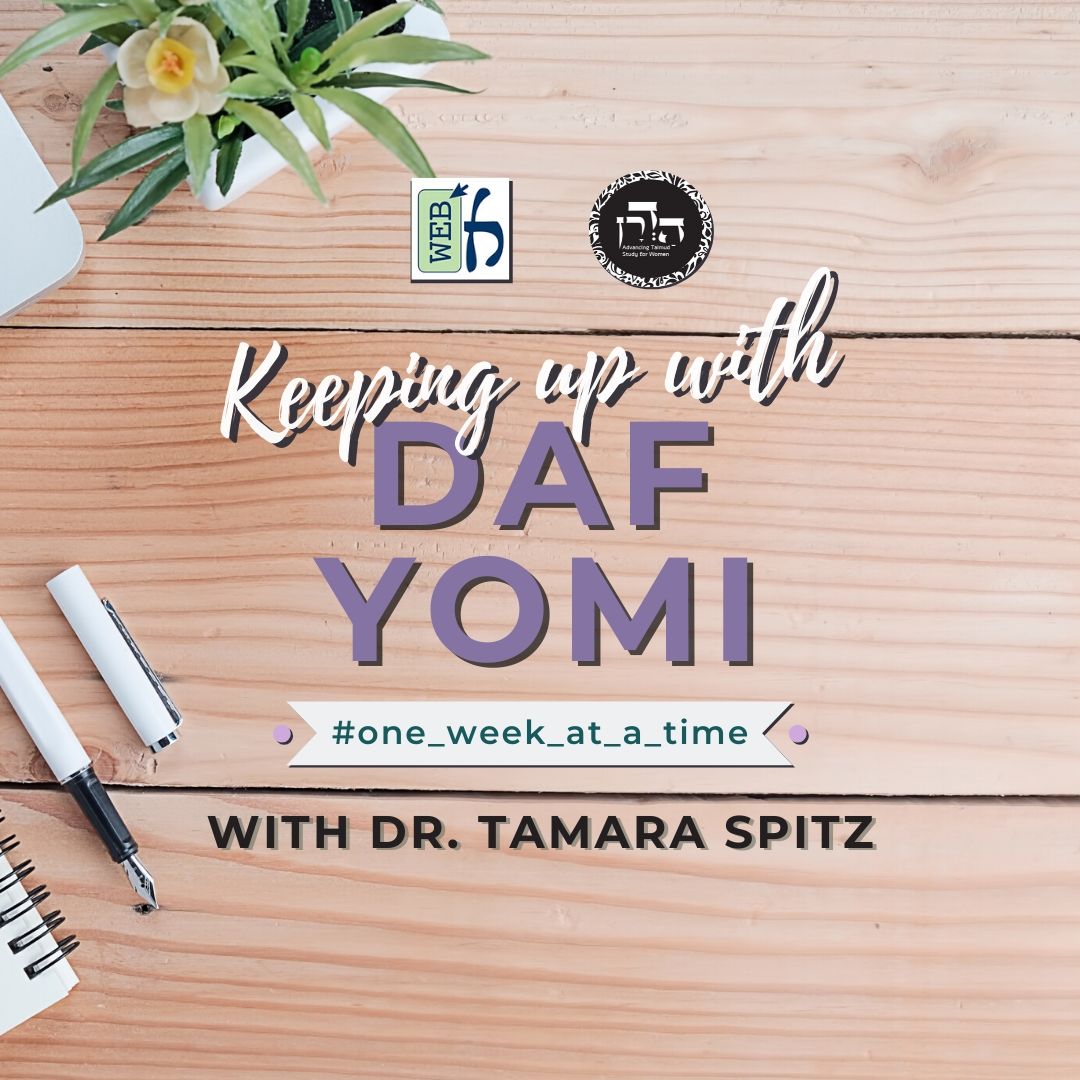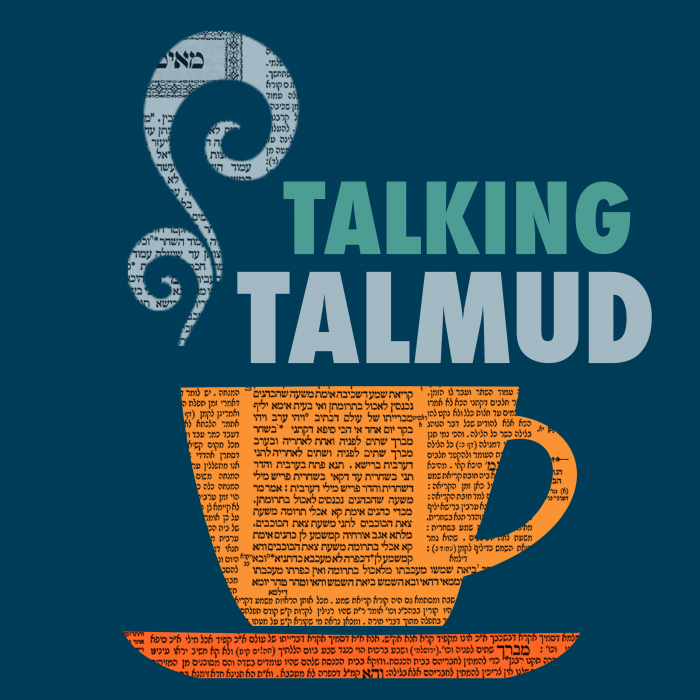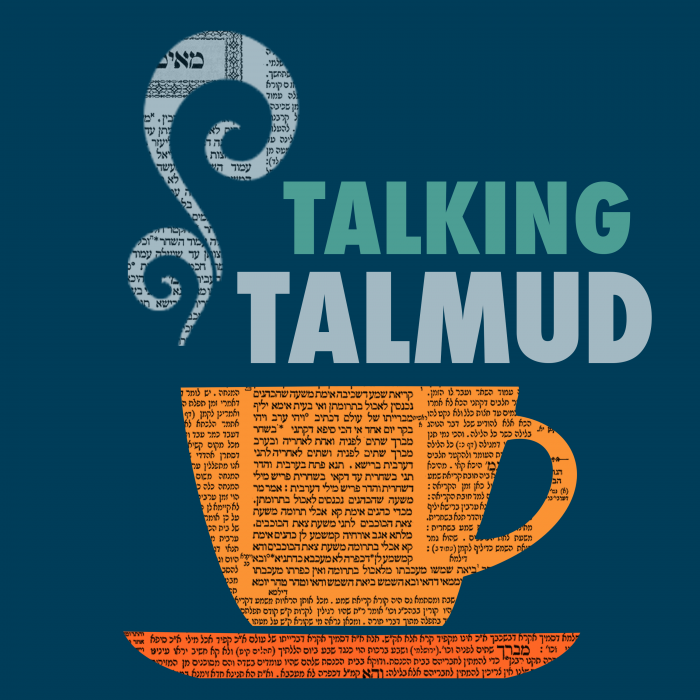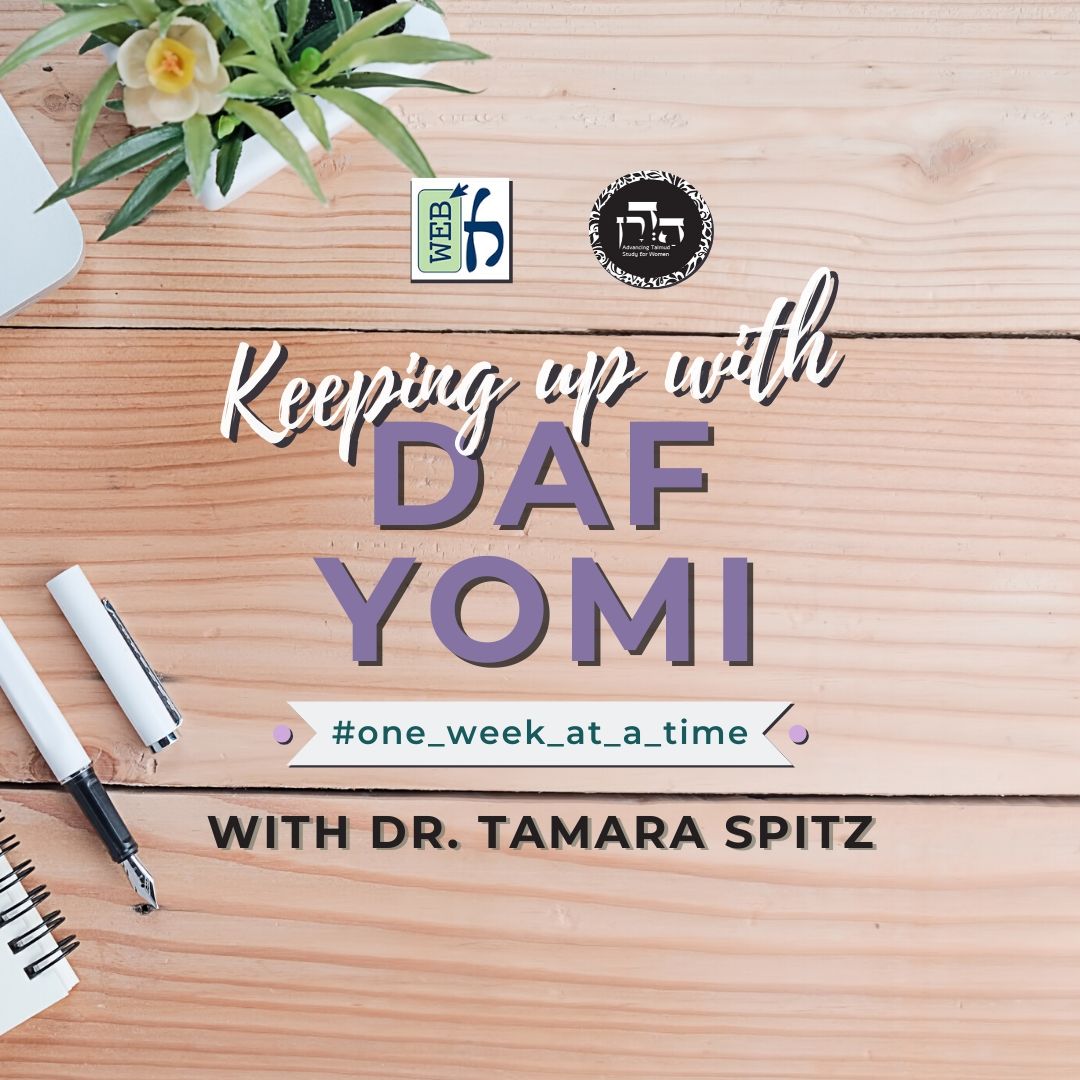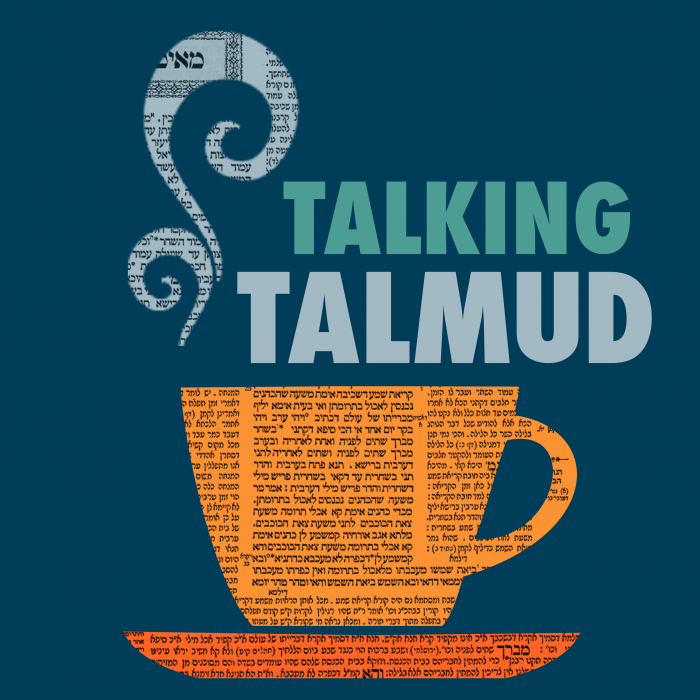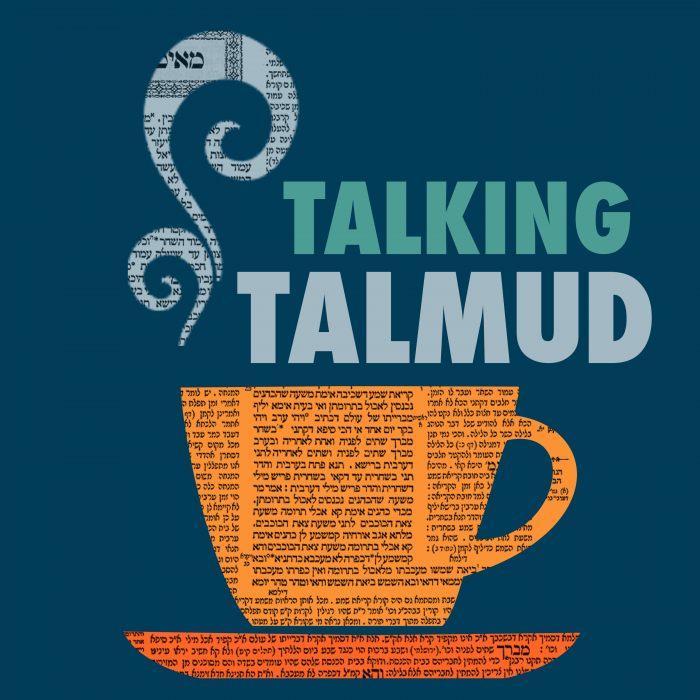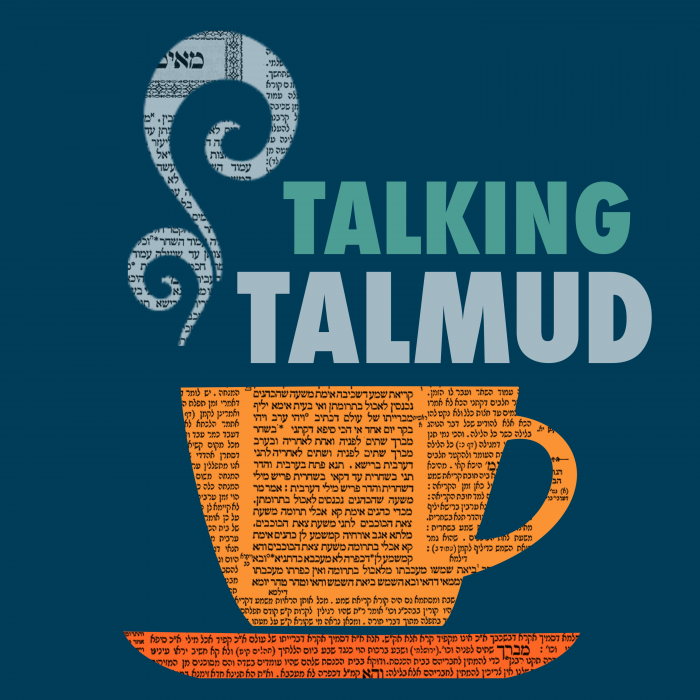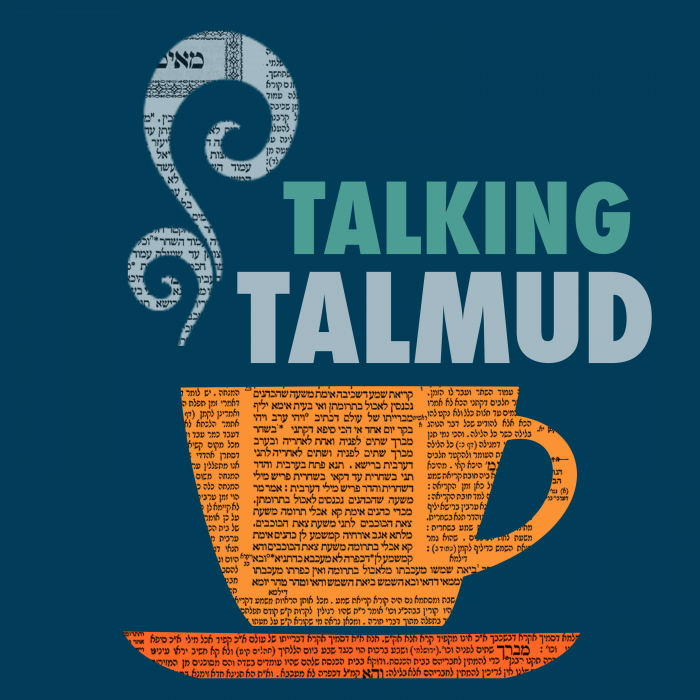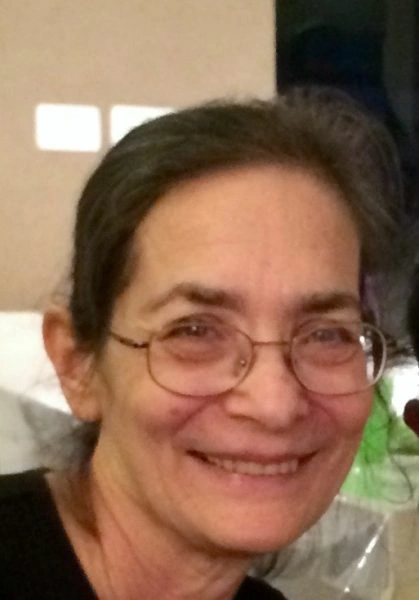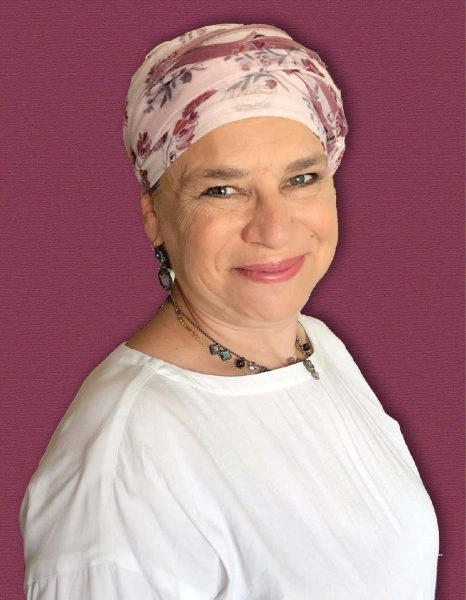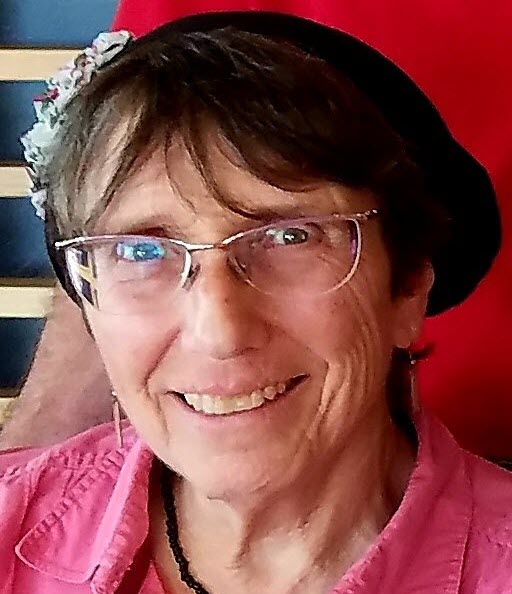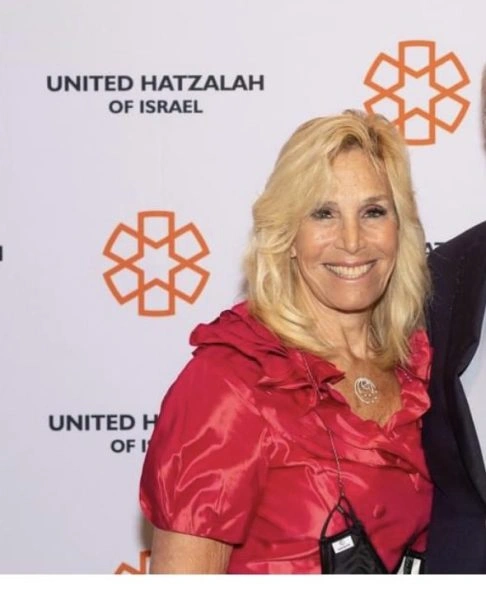The gemara explains the process of removing the ashes from the fire and putting them in a pile on top of the altar into the ‘tapuach’ and the setting up of new logs for the two piles of wood on the altar.
This month’s learning is sponsored by Beth Balkany in honor of their granddaughter, Devorah Chana Serach Eichel. “May she grow up to be a lifelong learner.”
This month’s learning is dedicated in memory of Rabbi Dr. Raymond Harari z”l, on his 1st yahrzeit. As an educator, principal of Yeshiva of Flatbush, and community rabbi, he inspired thousands with his wisdom, warmth, and unwavering commitment to Torah.
Want to dedicate learning? Get started here:


Today’s daily daf tools:
This month’s learning is sponsored by Beth Balkany in honor of their granddaughter, Devorah Chana Serach Eichel. “May she grow up to be a lifelong learner.”
This month’s learning is dedicated in memory of Rabbi Dr. Raymond Harari z”l, on his 1st yahrzeit. As an educator, principal of Yeshiva of Flatbush, and community rabbi, he inspired thousands with his wisdom, warmth, and unwavering commitment to Torah.
Today’s daily daf tools:
Delve Deeper
Broaden your understanding of the topics on this daf with classes and podcasts from top women Talmud scholars.
New to Talmud?
Check out our resources designed to help you navigate a page of Talmud – and study at the pace, level and style that fits you.
The Hadran Women’s Tapestry
Meet the diverse women learning Gemara at Hadran and hear their stories.
Tamid 29
לֹא נִתְעַצֵּל הַכֹּהֵן מִלְּהוֹצִיא אֶת הַדֶּשֶׁן.
the priest tasked with removing the ashes from the circular heap was never indolent in removing the ashes.
הֵחֵלּוּ מַעֲלִין בַּגְּזִירִין לְסַדֵּר אֶת הַמַּעֲרָכָה. וְכִי כׇּל הָעֵצִים כְּשֵׁרִין לַמַּעֲרָכָה הֵן? כׇּל הָעֵצִים כְּשֵׁרִין לַמַּעֲרָכָה חוּץ מִשֶּׁל גֶּפֶן וְשֶׁל זַיִת. אֲבָל בְּאֵלּוּ הָיוּ רְגִילִין: בְּמֻרְבִּיּוֹת שֶׁל תְּאֵנָה, שֶׁל אֱגוֹז, וְשֶׁל עֵץ שֶׁמֶן.
After the ashes were cleared to the middle of the altar, the priests began raising logs onto the altar in order to assemble the arrangement of wood on which the offerings were burned. The tanna asks: And is wood from all the trees fit for the arrangement? The tanna replies: Wood from all the trees is fit for the arrangement, except for wood from the vine and from the olive tree, but the priests were accustomed to assemble the arrangement with wood from these trees: With young branches of the fig tree, of the nut tree, and of pinewood.
סִידֵּר אֶת הַמַּעֲרָכָה גְּדוֹלָה מִזְרָחָה, וַחֲזִיתָהּ מִזְרָחָה. וְרָאשֵׁי גְזִירִין הַפְּנִימִים הָיוּ נוֹגְעִין בַּתַּפּוּחַ. וְרֶיוַח הָיָה בֵּין הַגְּזִירִים, שֶׁהָיוּ מַצִּיתִים אֶת הָאֲלִיתָא מִשָּׁם.
The priest who removed the ashes then assembled the large arrangement of wood upon which the daily offering and the sacrificial portions of the other offerings are burned. It was assembled on the eastern side of the altar, and its opening was on the eastern side of the altar, and the inner end of the logs would touch the circular heap of ashes. And there was space between the logs, in which the priests placed twigs, as they would ignite the kindling [ha’alita] from there, so that the fire would spread to the logs.
בֵּרְרוּ מִשָּׁם עֲצֵי תְאֵנָה יָפִים, סִידֵּר אֶת הַמַּעֲרָכָה שְׁנִיָּה לִקְטוֹרֶת כְּנֶגֶד מַעֲרָבִית דְּרוֹמִית, מָשׁוּךְ מִן הַקֶּרֶן כְּלַפֵּי צָפוֹן אַרְבַּע אַמּוֹת.
The priests selected from among the logs that were there fine logs from fig trees, as when this type of wood was burned it would become coals rather than ashes. The priest who removed the ashes then assembled the second arrangement of wood, from which the coals were taken to the golden altar in the Sanctuary for the burning of the incense. The second arrangement was assembled next to the southwestern corner of the altar and was removed from the corner toward the north side of the altar by a distance of four cubits.
בְּעוֹמֶד חָמֵשׁ סְאִין גֶּחָלִים. וּבְשַׁבָּת – בְּעוֹמֶד שְׁמוֹנֶה סְאִין גֶּחָלִים. שֶׁשָּׁם הָיוּ נוֹתְנִים שְׁנֵי בְּזִיכֵי לְבוֹנָה שֶׁל לֶחֶם הַפָּנִים. הָאֵבָרִים וְהַפְּדָרִים שֶׁלֹּא (הָיוּ) נִתְעַכְּלוּ מִבָּעֶרֶב, מַחֲזִירִין אוֹתָן לַמַּעֲרָכָה, וְהִצִּיתוּ שְׁתֵּי מַעֲרָכוֹת בָּאֵשׁ. יָרְדוּ וּבָאוּ לָהֶם לְלִשְׁכַּת הַגָּזִית.
The second arrangement was assembled of an amount of wood estimated to produce five se’a of coals. And on Shabbat, it was assembled of an amount of wood estimated to produce eight se’a of coals, as there the priests would place the two bowls of frankincense that accompanied the shewbread and that were burned on the altar on Shabbat. With regard to the limbs and the fats that were not consumed during the time from the previous evening, the priests would return them to the large arrangement to be burned. And the priests kindled those two arrangements with fire and descended from the altar. And they then came to the Chamber of Hewn Stone, where they would conduct the second lottery in order to determine who would perform the subsequent rites.
גְּמָ׳ אָמַר רָבָא: גּוּזְמָא. הִשְׁקוּ אֶת הַתָּמִיד בְּכוֹס שֶׁל זָהָב, אָמַר רָבָא: גּוּזְמָא.
GEMARA: The mishna teaches that sometimes there was as much as three hundred kor of ashes upon the circular heap in the middle of the altar. Rava said: This is an exaggeration. The mishna merely means that the heap contained a large quantity of ashes, not that it reached that actual amount. Similarly, the mishna states (30a) that before slaughtering the daily offering the priests gave the lamb selected for the daily offering water to drink in cup of gold, so that it would be easier to flay it after it was slaughtered. With regard to this mishna, Rava said: This is an exaggeration, as the priests would not give the animal to drink from an actual golden vessel.
אָמַר רַבִּי אַמֵּי: דִּבְּרָה תּוֹרָה לְשׁוֹן הֲבַאי, דִּבְּרוּ נְבִיאִים לְשׁוֹן הֲבַאי, דִּבְּרוּ חֲכָמִים לְשׁוֹן הֲבַאי.
In this connection, Rabbi Ami says: In certain instances, the Torah spoke employing exaggerated [havai] language, the prophets spoke employing exaggerated language, and the Sages spoke employing exaggerated language.
דִּבְּרָה תּוֹרָה לְשׁוֹן הֲבַאי – דִּכְתִיב: ״עָרִים גְּדֹלֹת וּבְצוּרֹת בַּשָּׁמָיִם״, בַּשָּׁמַיִם סָלְקָא דַּעְתָּךְ?! אֶלָּא גּוּזְמָא.
The Gemara cites examples for this statement: The Torah spoke employing exaggerated language, as it is written: “Hear, Israel: You are passing over the Jordan this day, to go in to dispossess nations greater and mightier than you, cities great and fortified up to heaven” (Deuteronomy 9:1). Does it enter your mind to say that the cities were literally fortified up to heaven? Rather, this is an exaggeration.
דִּבְּרוּ חֲכָמִים לְשׁוֹן הֲבַאי – הָא דַּאֲמַרַן: תַּפּוּחַ, וְהִשְׁקוּ אֶת הַתָּמִיד בְּכוֹס שֶׁל זָהָב.
Likewise, the Sages spoke employing exaggerated language, as in this example that we stated with regard to the circular heap of ashes, and in the description: The priests gave the lamb selected for the daily offering water to drink in a cup of gold.
דִּבְּרוּ נְבִיאִים לְשׁוֹן הֲבַאי – דִּכְתִיב: ״(וְכׇל עַם הָאָרֶץ) מְחַלְּלִים בַּחֲלִלִים וְגוֹ׳ וַתִּבָּקַע הָאָרֶץ לְקוֹלָם״.
The prophets spoke employing exaggerated language, as it is written with regard to the coronation of King Solomon: “And all the people of the land came up after him, and the people piped with pipes, and rejoiced with great joy, so that the earth rent with the sound of them” (I Kings 1:40). The verse merely means that the sound was very great, not that it actually caused the earth to split.
אָמַר רַבִּי יַנַּאי בַּר נַחְמָנִי, אָמַר שְׁמוּאֵל: בִּשְׁלֹשָׁה מְקוֹמוֹת דִּבְּרוּ חֲכָמִים בִּלְשׁוֹן הֲבַאי, וְאֵלּוּ הֵן: תַּפּוּחַ, גֶּפֶן, וּפָרֹכֶת.
Rabbi Yannai bar Naḥmani says that Shmuel says: In three instances, the Sages spoke in exaggerated language, and these are those instances: With regard to the circular heap of ashes on the altar, with regard to the vine, and with regard to the Curtain that separated the Sanctuary and the Holy of Holies, as explained below.
לְאַפּוֹקֵי מִדְּרָבָא, דִּתְנַן: הִשְׁקוּ אֶת הַתָּמִיד בְּכוֹס שֶׁל זָהָב, וְאָמַר רָבָא: גּוּזְמָא, קָא מַשְׁמַע לַן: הָנֵי – אִין, הָתָם – לָא. אֵין עֲנִיּוּת בִּמְקוֹם עֲשִׁירוּת.
The Gemara notes that Shmuel’s statement serves to exclude the opinion of Rava, as we learned in a mishna: The priests gave the lamb selected for the daily offering water to drink in a cup of gold, and Rava said: This is an exaggeration. Shmuel teaches us that in these three instances, yes, the Sages employed exaggerated language, but there, in the case of the golden cup, it is not an exaggeration, as even the cup from which the lamb was given to drink was actually made of gold. This is because there is no poverty in a place of wealth, i.e., the Temple is a place of wealth, where one must act in a lavish manner.
תַּפּוּחַ – הָא דַּאֲמַרַן. גֶּפֶן – דְּתַנְיָא: גֶּפֶן זָהָב הָיְתָה עוֹמֶדֶת עַל פֶּתַח הַהֵיכָל, וּמוּדְלָה עַל גַּבֵּי כְּלוֹנְסוֹת, וְכׇל מִי שֶׁמִּתְנַדֵּב עָלֶה
The Gemara details the three instances with regard to which Shmuel states that the Sages employed exaggerated language: The case of the circular heap of ashes is that which we stated above. The case of the vine is as it is taught in a mishna (Middot 3:8): A gold ornament in the form of a vine stood at the entrance to the Sanctuary, and it hung upon posts. And whoever would donate an ornamental gold leaf,
אוֹ גַרְגִּיר, אוֹ אֶשְׁכּוֹל – מֵבִיא וְתוֹלֶה בָּהּ. אֲמַר רַבִּי אֶלְעָזָר בְּרַבִּי צָדוֹק: מַעֲשֶׂה הָיָה, וְנִמְנוּ עָלֶיהָ שְׁלֹשׁ מֵאוֹת כֹּהֲנִים לְפַנּוֹתָהּ.
or grape, or cluster of grapes, would bring it to the Temple and a priest would hang it on the vine. Rabbi Elazar, son of Rabbi Tzadok, said: There was once an incident and three hundred priests were enlisted to lift the vine in order to move it, due to its immense weight. This description is an exaggeration, as although the vine was extremely heavy, it did not require three hundred priests to lift it.
פָּרוֹכֶת – דִּתְנַן רַבָּן שִׁמְעוֹן בֶּן גַּמְלִיאֵל אוֹמֵר מִשּׁוּם רַבִּי שִׁמְעוֹן הַסְּגָן: פָּרוֹכֶת עׇבְיָהּ טֶפַח, עַל שִׁבְעִים וּשְׁנַיִם נִימִין נֶאֱרֶגֶת, וְעַל כׇּל נִימָה וְנִימָה עֶשְׂרִים וְאַרְבָּעָה חוּטִין.
With regard to Shmuel’s statement that the Sages exaggerated with regard to the weight of the Curtain, it is as we learned in a mishna (Shekalim 21b) that Rabban Shimon ben Gamliel says in the name of Rabbi Shimon the deputy High Priest: With regard to the Curtain, its thickness is one handbreadth. It is woven from seventy-two strands of yarn, and each and every strand of those seventy-two strands is made from twenty-four threads. The Curtain is fashioned from four materials: Sky-blue wool, purple wool, scarlet wool, and fine linen, and every strand comprises six threads of each material.
אׇרְכָּהּ אַרְבָּעִים אַמָּה, וְרׇחְבָּהּ עֶשְׂרִים אַמָּה. וּמִשְּׁמוֹנִים וּשְׁתַּיִם רִיבּוֹא נַעֲשֵׂית, וּשְׁתַּיִם עוֹשִׂין בְּכׇל שָׁנָה וְשָׁנָה, וּשְׁלֹשׁ מֵאוֹת כֹּהֲנִים מַטְבִּילִין אוֹתָהּ.
Its length is forty cubits, corresponding to the height of the entrance to the Sanctuary, and its width is twenty cubits, matching the width of the entrance. And it is made at the cost of eighty-two ten-thousands, i.e., 820,000, gold dinars,and two new Curtains are made in each and every year. And the Curtain was so heavy that when it was immersed three hundred priests would immerse it.
הֵחֵלּוּ מַעֲלִין בַּגְּזִירִין לְסַדֵּר אֶת הַמַּעֲרָכָה [וְכוּ׳]. חוּץ מִשֶּׁל זַיִת וּמִשֶּׁל גֶּפֶן [וְכוּ׳]. הָנֵי מַאי טַעְמָא? רַב פָּפָּא אָמַר: מִשּׁוּם דִּקְטִרִי. רַב אַחָא בַּר יַעֲקֹב אָמַר: מִשּׁוּם יִשּׁוּב דְּאֶרֶץ יִשְׂרָאֵל.
§ The mishna teaches: The priests began raising logs onto the altar to assemble the arrangement of wood. Wood from all the trees is fit for the arrangement, except for wood from the olive tree and from the vine. The Gemara asks: What is the reason that wood from these trees is not fit for the arrangement? Rav Pappa said: It is due to the fact that they have thick knots in their branches, which cause the wood to burn poorly and produce excessive smoke. Rav Aḥa bar Ya’akov said: Although these trees are unfit for the arrangement primarily because they burn poorly, there is an additional reason: They are not used because using them would deplete the olive trees and grapevines, which would be detrimental to the settlement of Eretz Yisrael.
מֵיתִיבִי: ״עַל הָעֵצִים אֲשֶׁר עַל הָאֵשׁ״ – עֵצִים הַנִּתּוֹכִים לִהְיוֹת אֵשׁ, וּמַאי נִיהוּ? דּוּקְרֵי שַׁפּוּד דְּלָא קְטִרִי וְאָזְלִי מִקְּטַר מִתּוֹכוֹ!
The Gemara raises an objection to the explanation of Rav Aḥa bar Ya’akov from a baraita: The verse states with regard to the wood of the arrangement: “And the sons of Aaron the priest shall put fire upon the altar, and lay wood in order upon the fire. And Aaron’s sons, the priests, shall lay the pieces, and the head, and the fat, in order upon the wood that is on the fire which is upon the altar” (Leviticus 1:7–8). The verse indicates that the arrangement must be composed of wood that burns completely, until it becomes like the fire itself. And what is that type of wood? This is referring to branches that are as smooth as a skewer [shipud], which do not become knotted from within. Evidently, the primary qualification of the wood is that it does not have knots.
וְכִי כׇּל הָעֵצִים כְּשֵׁרִים לַמַּעֲרָכָה הֵן? כׇּל הָעֵצִים כְּשֵׁרִים, חוּץ מִן זַיִת וְגֶפֶן. אֲבָל בְּאֵלּוּ הָיוּ רְגִילִין: בְּמֻרְבִּיּוֹת שֶׁל תְּאֵנָה, וְשֶׁל אֱגוֹז, וְשֶׁל עֵץ שֶׁמֶן. רַבִּי אֱלִיעֶזֶר מוֹסִיף אַף שֶׁל מַיִישׁ, וְשֶׁל אַלּוֹן, וְשֶׁל דֶּקֶל, וְשֶׁל חָרוּב, וְשֶׁל שִׁקְמָה.
The Gemara continues: And is wood from all the trees fit for the arrangement? The baraita explains: Wood from all the trees is fit for the arrangement, except for olive wood and wood from the vine, but the priests were accustomed to assemble the arrangement with wood from these trees: With young branches of the fig tree, of the nut tree, and of pinewood. Rabbi Eliezer adds that the following types of wood are also unfit: The wood of the hackberry tree, of the oak, of the palm tree, of the carob tree, and of the sycamore.
בִּשְׁלָמָא לְמַאן דְּאָמַר מִשּׁוּם דִּקְטִרִי, בְּהָא קָמִיפַּלְגִי: דְּמָר סָבַר: אַף עַל גַּב דְּלָא קְטִרִי מִגַּוַּאי, כֵּיוָן דִּקְטִרִי מִבָּרַאי – לָא מַיְיתִינַן. וּמָר סָבַר: כֵּיוָן דְּלָא קְטִרִי מִגַּוַּאי, אַף עַל גַּב דְּמִבָּרַאי קְטִרִי – מַיְיתִינַן.
The Gemara explains the difficulty: Granted, according to the one who said that the wood of the olive and of the vine are not used because they have knots, one can explain that the first tanna of the baraita and Rabbi Eliezer disagree with regard to this matter: One Sage, Rabbi Eliezer, holds that although the wood of the trees that he deems unfit for the arrangement, e.g., the hackberry tree and the oak, are not knotted from within, since they are knotted on the outside, we do not bring wood from these trees for the arrangement. And one Sage, the first tanna, holds that since these are not knotted from within, even though they are knotted on the outside, we do bring wood from these trees for the arrangment.
אֶלָּא לְמַאן דְּאָמַר מִשּׁוּם יִשּׁוּב דְּאֶרֶץ יִשְׂרָאֵל: דֶּקֶל מִי לֵית בֵּיהּ מִשּׁוּם יִשּׁוּב דְּאֶרֶץ יִשְׂרָאֵל?
But according to the one who said that the wood of the olive and of the vine are not used because it would be detrimental to the settlement of Eretz Yisrael, the palm tree should also be unfit for the arrangement. Isn’t it also subject to the consideration that cutting it down would be detrimental to the settlement of Eretz Yisrael? It is also one of the species about which Eretz Yisrael is praised. If so, why does the first tanna deem the palm tree fit for the arrangement?
אָמַר לָךְ: וְלִיטַעְמָיךְ: תְּאֵנָה לֵית בָּהּ מִשּׁוּם יִשּׁוּב דְּאֶרֶץ יִשְׂרָאֵל?! אֶלָּא מַאי אִית לָךְ לְמֵימַר? בִּתְאֵנָה דְּלָא עֲבִדָא פֵּירָא, דֶּקֶל נָמֵי – בִּדְלָא עָבֵיד פֵּירָא.
The Gemara explains that Rav Aḥa bar Ya’akov could say to you: It is unnecessary to cite the baraita in order to raise this difficulty, as the mishna itself states that the fig tree is a preferred source of firewood. And according to your reasoning, isn’t the fig tree subject to the consideration that cutting it down would be detrimental to the settlement of Eretz Yisrael? It is also one of the species about which Eretz Yisrael is praised. Rather, what have you to say? One must say that the mishna is referring to a fig tree that does not bear fruit. With regard to the palm tree as well, the baraita is referring to a variety that does not bear fruit.
וּמִי אִיכָּא תְּאֵנָה דְּלָא עָבְדָא פֵּירָא? אִין, כִּדְרַחֲבָה. דְּאָמַר רַחֲבָה: מַיְיתִי תְּאֵינֵי חִיוָּרָתָא,
The Gemara asks: But is there a fig tree that does not bear fruit? The Gemara answers: Yes, there are fig trees that do not bear fruit, and this is in accordance with a statement of Raḥava with regard to a method of cultivating fig trees, as Raḥava said: The growers bring saplings of white figs, which are an inferior variety,



